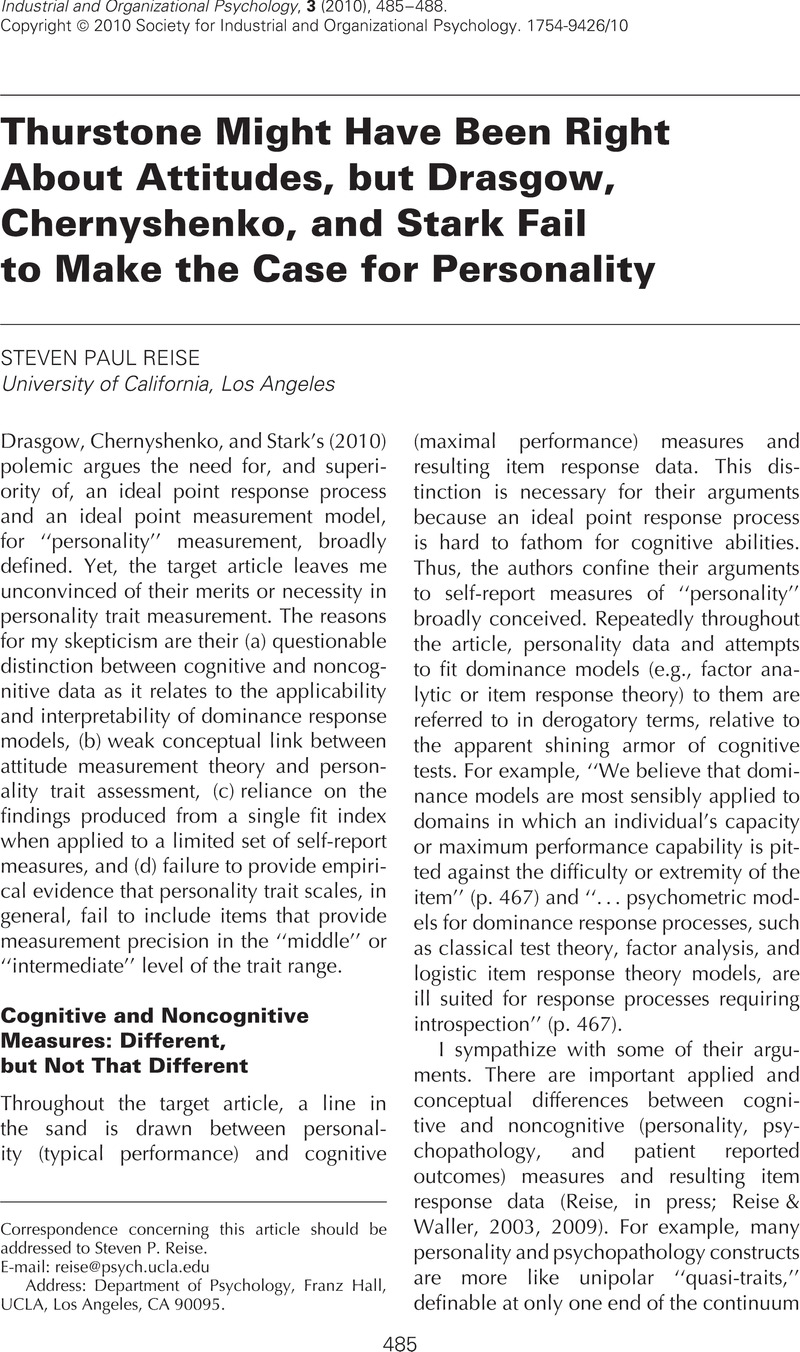Crossref Citations
This article has been cited by the following publications. This list is generated based on data provided by Crossref.
Drasgow, Fritz
Chernyshenko, Oleksandr S.
and
Stark, Stephen
2010.
Improving the Measurement of Psychological Variables: Ideal Point Models Rock!.
Industrial and Organizational Psychology,
Vol. 3,
Issue. 4,
p.
515.
Park, DongGun
Choi, MyungOk
Lee, WonSun
Lee, HyeMin
and
Lee, JunHee
2012.
Comparison between dominance process model and ideal point response model for personality assesment.
Korean Journal of Industrial and Organizational Psychology,
Vol. 25,
Issue. 2,
p.
421.
Tay, Louis
and
Drasgow, Fritz
2012.
Theoretical, Statistical, and Substantive Issues in the Assessment of Construct Dimensionality.
Organizational Research Methods,
Vol. 15,
Issue. 3,
p.
363.
Crowe, Michael L.
Weiss, Brandon M.
Sleep, Chelsea E.
Harris, Alexandra M.
Carter, Nathan T.
Lynam, Donald R.
and
Miller, Joshua D.
2021.
Fearless Dominance/Boldness Is Not Strongly Related to Externalizing Behaviors: An Item Response-Based Analysis.
Assessment,
Vol. 28,
Issue. 2,
p.
413.
Sun, Tianjun
Fraley, R. Chris
and
Drasgow, Fritz
2021.
Matches Made With Information: Fitting Measurement Models to Adult Attachment Data.
Assessment,
Vol. 28,
Issue. 7,
p.
1828.
He, Siqi
and
Kern, Justin L.
2024.
Investigating Directional Invariance in an Item Response Tree Model for Extreme Response Style and Trait-Based Unfolding Responses.
Applied Psychological Measurement,
Vol. 48,
Issue. 4-5,
p.
187.



